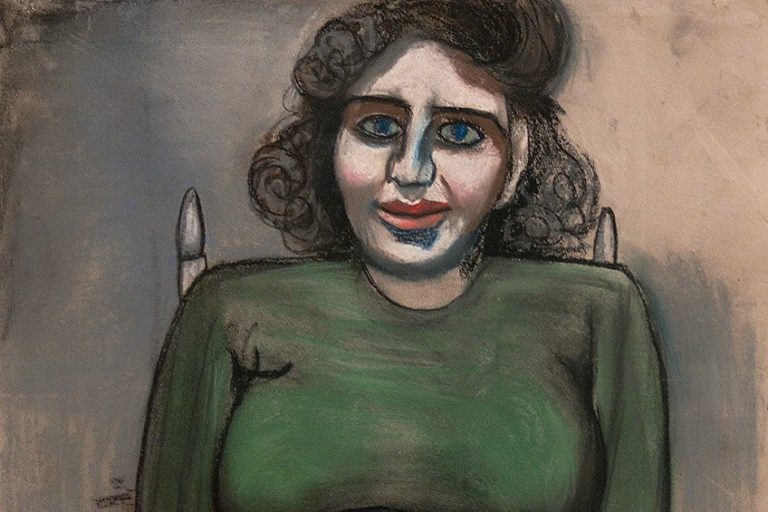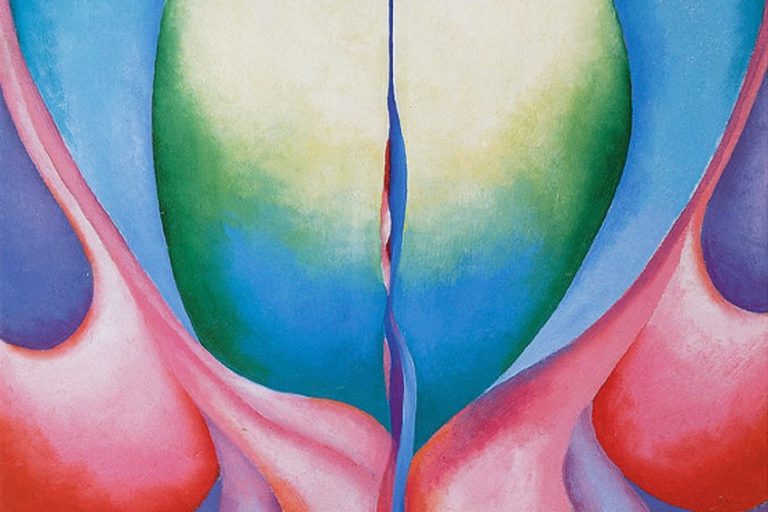William Andrew Loomis – The Famous Commercial Illustrator
Who was William Andrew Loomis, and what was his impact on the art world in the 1900s? 20th century art illustrator and educator Andrew Loomis created many enthralling visuals, advertisements, and figurative paintings during the Golden Age of the century. Today, his legacy remains in the minds and practices of those who studied his techniques and philosophies from the many art education publications he released in his lifetime. In this article, we will provide you with the full William Andrew Loomis biography, which will offer unique insights into his background, early career, and contributions to commercial art, painting, and education. Read on to uncover the inner world of William Andrew Loomis.
From Commercial Illustration to Art Education: The Life and Art of William Andrew Loomis
| Artist Name | William Andrew Loomis |
| Date of Birth | 15 June 1892 |
| Date of Death | 25 May 1959 |
| Place of Birth | Syracuse, New York City, United States |
| Nationality | American |
| Associated Movements, Themes, and Styles | Modern art, Realism, advertising media, print media art, product illustration, figurative art, American culture, portraiture, instructional art, and art education |
| Mediums | Painting, illustration, drawing, and writing |
| Famous Artworks |
|
Born in 1892, renowned commercial illustrator, painter, and art educator William Andrew Loomis was a revolutionary figure in the field of 20th-century advertising, print media art, and instructional art publications. Loomis created many timeless masterpieces that echo his observational eye for realism and wisdom in art practice. Loomis once said that “a head is not drawn until you can feel the unseen side”, thus redirecting young artists and aspiring creatives to think more broadly about their technical processes.

To realize the full potential of the object you aim to capture, you must metaphorically sense or feel its completeness or whole form when viewing it, for it to be considered a successful study. While this is just one snippet from the artist’s long-standing career in art education, below, we will explore the depths of Loomis’ life and artistic contributions that will offer you a few gems of wisdom, and perhaps inspiration to leave behind a meaningful legacy.
A William Andrew Loomis Biography
Born in 1892 in Syracuse, New York City, Andrew Loomis was on his way to becoming one of the most prolific commercial illustrators and advertising designers of the 20th century. What made Loomis’ artistic style and approach unique was his ability to fuse commercial products with fine art styles to create works of art that not only sold well but also left an impact on the artistic development of his career and the way people consumed American ideals.
From working with brands like Coca-Cola to Kellogg’s Company, Loomis always brought a fresh perspective and a burst of color to reawaken popular products of American culture that resonated with the audience at the time.
While we will touch on a selection of his art education publications later, it is worth noting that his publication, Fun with a Pencil (1939), had the most profound and expansive reach in his career. Since then, the book cemented Loomis’ legacy through his instructional and curated educational tone that inspired countless modern artists, including illustrators like Steve Lieber and Alex Ross. Much of Loomis’ style and teaching methodology was centered on encouraging one’s individual style and expression to guide artists through the fundamentals of art. Alongside this, he was successful in combining his life wisdom with visual storytelling to inspire his students and those who wished to truly learn and not be “perfect”.
Early Life and Education
Born on 15 June 1892 in Syracuse, Loomis grew up in Zanesville, Ohio, and was exposed to many new cultural and technological developments that were taking place in the United States at the time. At the time at which he was born, the population of the country was only sitting at a basic 64 million and just saw the addition of Hawaii, Idaho, and Wyoming to the Union. While there is not much information on the artist’s early life, one can imagine the different experiences and worldviews he might have had and developed while growing up in a period of intense cultural innovation, political upheaval, and change.

Loomis was known to have attended the Art Students League of New York in 1911 at the age of 19 and was taught by Frank DuMond and George Bridgman. He then studied at the Art Institute of Chicago while working at Charles Daniel Frey studio. Loomis then enlisted in the military in 1917, which paused his studies and career. He spent 20 months in service under the Engineering Corps and spent half of his service posted in France. After his service, he moved through different advertising agencies and established a studio in Chicago in 1922.
Commercial Illustration and Painting
It was found that after his military service, Loomis spent some time working for Charles Everett Johnson Advertising Art Studio, which also housed the commercial artist, Louis Paeth. Paeth was known to have worked alongside Loomis at the Charles Everett Johnson Advertising Art Studio in Chicago. While this studio was undergoing a new merger, Loomis remained to provide his services for some time. Within the same period, Loomis also created poster art with images of streetcars for the Street Railways Advertising Company. At the time, Chicago was considered a hub in advertising so one can imagine the exposure that Loomis might have gained, as well as the experience as a young artist in commercial illustration.
Most of Loomis’ art and illustrations from the first quarter of the 20th century showcase his distinct understanding of structure, form, design, and composition, which he seemed to display a great deal of control over.
There are many realistically rendered paintings and illustrations that Loomis produced to promote American culture and advertise popular products. Among his works, one can also admire the precision with which he approached his works and the effectiveness of his compositions in guiding the viewers’ eyes across the illustrations using chromatic variation. Along with his deep understanding of light, color, and compositional techniques, Loomis was also adept at conveying form when working with a paintbrush. From placing subjects out of focus to adding acute details rendered with immaculate sharpness, his illustrations were sought out by many.

Until the late 1930s, Loomis continued to produce paintings for advertising use across multiple companies, including Quaker Oats, Coca-Cola, Munsingwear, Palmolive, Studebaker, and Kellogg’s. He also painted the official portraits of the Dionne quintuplets and created the cover art for the Cracker Jack box. By 1932, he also created painted artworks that debuted the candy bar 3 Musketeers with a portrait of a Mars Inc. chemist, who worked on the development of the new candy bar.
Art Instruction and Education
Loomis’ art instruction books were perhaps the most influential contributions from his legacy that were embedded with the artist’s lighthearted sense of humor. Sometime in the 1930s, Loomis started teaching at the American Academy of Art, which perhaps motivated him to create and publish his first educational book in 1939 entitled Fun With a Pencil. His books provided direction for artists of all levels and were infused with much fun that seemed more of a chat than an instructional “how-to” book for his readers.
The most celebrated aspect of Loomis’ books was his encouraging and positive tone toward the reader that seemed to highlight the beauty of art-making, even if it were as simple as the use of a pencil.
Loomis’ art education books were beneficial to those who preferred a welcoming and comfortable teaching style that was, in the words of Loomis, “direct and efficient”. His efforts in illustration and advertising design also shone through in his ability to promote products while retaining his fine art style. Of particular note is the Loomis method that followers of the artist found in his educational literature on drawing and representing the human head. The method was defined as an approach that assists artists in recreating the human head using drawing. Loomis’ methods force students to engage in ideas about the structure of the head as a way to determine how and where one can place facial features in a portrait, for example. Below, we have summarized a selection of Loomis’ art education books that were incredibly influential among aspiring artists of the last century, many of whom still appreciate the valuable resources he left behind.
Figure Drawing For All Its Worth (1943)
For nearly seven decades Loomis’ Figure Drawing For All It’s Worth (1943) has remained a solid benchmark and guide to many who wish to master drawing and rendering the human figure. The book was praised by the American Academy of Art as a “brilliant contribution” that offered a wealth of information on expert techniques alongside visually stunning examples. Loomis provided insight on how to move through rendering poses, age variations, and anatomy while narrating snippets of wise words and wit. Figure Drawing For All It’s Worth has also been described as the ultimate masterclass that equips artists with both amateur and professional practice in creating marketable work.
Creative Illustration (1947)
In 1947, Loomis also wrote and published Creative Illustration, which served as his magnum opus and immaculate guide for art professionals seeking a career in illustration. The book was written mainly for experienced artists and was divided into several topics spanning the subjects of storytelling, ideation, art elements, illustration, and experimenting. He also dove deeper into the relationships between tone and color, which will not disappoint professional readers.
Loomis does not simply provide a theoretical checklist of what to consider, but he also explains the psychology of image, drawing from his personal experience to help those understand what they might be getting into when pursuing a career in creative illustration.
Successful Drawing (1951)
Andrew Loomis was the author and illustrator of his 1951 art education book entitled Successful Drawing, which provided a comprehensive overview of the basics of creating a successful drawing. The publication covered the concepts of perspective, proportion, and pattern while presenting important notes on how to hone one’s approaches to character, construction, and consistency. The tone of the book catered to art audiences of all levels and was accompanied by pictures, wise words on good craftsmanship, and 48 step-by-step technical illustrations for practice.
Drawing the Head and Hands (1956)
Released a few years after Successful Drawing, Andrew Loomis’ Drawing the Head and Hands was the next successful art education publication by the artist who tackled two of the most complex parts of the human body to draw: the hands and the head.
He covered the basics of anatomical construction and many more details on how to approach angles, expressions, gestures, and light when rendering complex anatomical features.
The Eye of the Painter and the Elements of Beauty (1961)
Printed posthumously, The Eye of the Painter and the Elements of Beauty was written well before the artist died and details the artist’s reflections on the future of the art world during a period of chaos in the industry. Loomis also encouraged his readers in this publication to voice themselves and express their sense of uniqueness once they have mastered the basics. Following this mood, Loomis proceeded to outline what he called the 12 elements of beauty, which align closely with the elements of art, in addition to the quality of light, clarity, technique, and subject. Today, one can freely access a copy of Loomis’ The Eye of the Painter and the Elements of Beauty as an online document.
I’d Love to Draw (2014)
Published in 2014, I’d Love to Draw is among the posthumous collections of Andrew Loomis that also contains illustrations by the famous illustrator Alex Ross, who was largely inspired by Loomis. The book is said to contain a collection of unseen works by Loomis that was restored by a group of expert illustrators, of which Ross was a part. Based on the reviews of the book, readers identified that although the original contributions were incomplete, Loomis did provide more details on the differences in displaying heads in drawing and how they can be presented as caricatures, normal, and exaggerated by simply expanding the shape.
The notes by Loomis included in the text also encourage readers to explore drawing further through motivational quotes that are targeted at the group of creatives who find themselves stuck between simply “cannot draw” and the budding hobbyist.
The Paintings and Illustrations of William Andrew Loomis
Between 2011 and 2013, Loomis’ educational art books were reissued by Titan Books as facsimile editions, which revived his legacy into the 21st century. In 1959, Loomis died at the California Hospital, leaving behind the many resourceful and influential publications and images of his era. Below, we will take a quick look at some of Loomis’ paintings and illustrations that highlight his mastery of the art elements.

Drink Budweiser, America’s Social Companion (c. 1930 -1939)
| Date | c. 1930 -1939 |
| Medium | Oil on canvas |
| Dimensions (cm) | 54.6 x 77.5 |
| Where It Is Housed | Private collection |
Drink Budweiser, America’s Social Companion is an iconic image created by Loomis between 1930 and 1939. The oil painting was created as an advertising illustration for the Budweiser Beer brand for a die-cut trade sign and depicts a fortune teller with a crystal ball. The message is clear since the mystic appears ready to foretell the future and perhaps, prosperity of Budweiser. A tall glass of beer appears in the crystal ball that was usually used to convey one’s fortune. In pairing the product with a recognizable image of a fortune reader, Loomis cleverly plays on the psychology of images and the mental associations one might make with luck and a commercial product of note.
“The future is Budweiser” echoes strongly in the painting and leaves behind a memorable impression on any viewer.
The Wedding (1940 – 1949)
| Date | 1940 – 1949 |
| Medium | Oil on canvas |
| Dimensions (cm) | 142.2 x 71.1 |
| Where It Is Housed | The Illustrated Gallery, Fort Washington, Pennsylvania, United States |
Priced at $49,000, this endearing painting by Loomis was created between 1940 and 1949 and illustrates a married couple who are about to share a kiss, as an older gentleman adjusts the train of the bride’s dress. From the drapery of the woman’s dress to the illuminated background and romantic emotion on the couple’s faces, the viewer is met with the compositional mastery of William Andrew Loomis. Perhaps painted from the perspective of a wedding photographer and a couple in preparation for a kiss, the painting and its vertical orientation immerse the viewer into the scene at play. The roundness of the bouquet also complements the shape of the elderly man’s silhouette to present a sense of yin-yang balance in form and shape.
Another interesting feature of the painting is that while most painters would opt for illuminating their subjects under light, Loomis chose to cast a darker shadow over the main subjects and illuminate the background for a somewhat dramatic and Medieval aesthetic.
Corn Flake Advertisement (c. 20th Century)
| Date | c. 20th century |
| Medium | Oil on paper |
| Dimensions (cm) | 61 × 73.7 |
| Where It Is Housed | The Illustrated Gallery, Fort Washington, Pennsylvania, United States |
This famous cereal advertisement was created for the Kellogg’s Company in the early 20th century by Loomis. The painting presented a classical and ideal representation of a rosy-cheeked blonde woman, who appears jolly and free-spirited while clutching onto a bouquet. The vitality and energy of the smiling woman are placed strategically next to a bowl of cereal and the box it was sold in. Loomis also used a font similar to that of Kellogg’s branding for the text “Delicious” and wrote “with fruits” in a more modern and evenly spaced font to emphasize the newness and appeal of the product. Viewers would therefore be attracted to the bold colors and uplifting mood of the character’s smile when viewing a Kellogg’s product.
One might also add that Loomis marketed popular colors of the Art Nouveau period while keeping the painterly qualities of his practice intact to present a truly unique image to viewers of his era.
The Legacy of William Andrew Loomis
While not much can be found about Loomis’ experiences in the military or accounts of his early childhood and death, the talented illustrator, painter, and author left behind an impactful legacy through art education literature. His many how-to art books have helped many professionals and aspiring artists in the field of illustration and drawing to find the true beauty behind the process and embrace individuality in a world where art definitions are constantly shifting and expanding.

Despite living under periods of immense change across American politics, culture, technology, and art, Loomis seemed to provide a sense of stability through art-making and illustration that shaped many iconic images in the advertising industry. In total, Loomis wrote several books, two of which were published only after his death.
The life and art of commercial illustrator, painter, advertising designer, arts educator, and author William Andrew Loomis is an inspirational example of how one can craft impactful resources to help other artists realize their potential and develop a passion for art. In exercising our ability to create and share knowledge, we also foster a sense of appreciation for art in newer generations, which can help birth innovative ideas and artworks in the contemporary. We hope that this article has proved useful and informative in satisfying your thirst for knowledge!
Frequently Asked Questions
Who Was William Andrew Loomis?
Famous 20th-century artist William Andrew Loomis was a commercial illustrator, art instructor, author, and painter who created artworks for many advertising and print media companies.
What Was William Andrew Loomis Most Famous For?
William Andrew Loomis was most famous for his instructional art books that taught beginner artists and professionals how to draw and illustrate. Loomis’ legacy is also informed by the Loomis method of drawing a human head, as well as many major commercial illustrations and paintings created for companies like Coca-Cola, Kellogg’s, Quaker Oats, Palmolive, and other big brands.
What Is the William Andrew Loomis Method?
The drawing technique created by the famous illustrator and painter William Andrew Loomis is known as the Loomis method. This describes an approach to drawing that relies on grids to illustrate a human head accurately and from multiple angles. Loomis invented this technique in the 1940s which was composed of two steps: establishing a geometric grid and drawing facial features in that grid.
Jordan Anthony is a film photographer, curator, and arts writer based in Cape Town, South Africa. Anthony schooled in Durban and graduated from the University of the Witwatersrand, Johannesburg, with a Bachelor of Art in Fine Arts. During her studies, she explored additional electives in archaeology and psychology, while focusing on themes such as healing, identity, dreams, and intuitive creation in her Contemporary art practice. She has since worked and collaborated with various professionals in the local art industry, including the KZNSA Gallery in Durban (with Strauss & Co.), Turbine Art Fair (via overheard in the gallery), and the Wits Art Museum.
Anthony’s interests include subjects and themes related to philosophy, memory, and esotericism. Her personal photography archive traces her exploration of film through abstract manipulations of color, portraiture, candid photography, and urban landscapes. Her favorite art movements include Surrealism and Fluxus, as well as art produced by ancient civilizations. Anthony’s earliest encounters with art began in childhood with a book on Salvador Dalí and imagery from old recipe books, medical books, and religious literature. She also enjoys the allure of found objects, brown noise, and constellations.
Learn more about Jordan Anthony and the Art in Context Team.
Cite this Article
Jordan, Anthony, “William Andrew Loomis – The Famous Commercial Illustrator.” Art in Context. February 5, 2024. URL: https://artincontext.org/william-andrew-loomis/
Anthony, J. (2024, 5 February). William Andrew Loomis – The Famous Commercial Illustrator. Art in Context. https://artincontext.org/william-andrew-loomis/
Anthony, Jordan. “William Andrew Loomis – The Famous Commercial Illustrator.” Art in Context, February 5, 2024. https://artincontext.org/william-andrew-loomis/.











